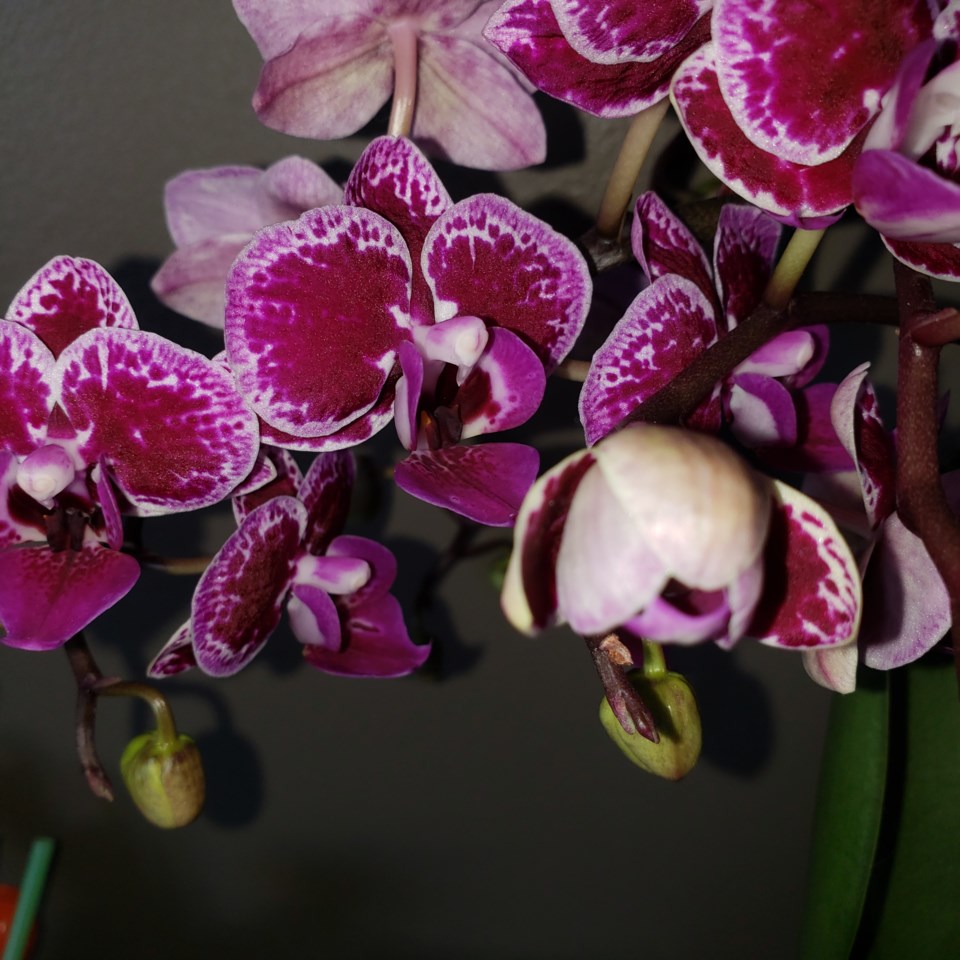Growing orchids is a very satisfying thing to do. They will grace your home with colour that lasts for months! So superior to cut flowers and it is not really that difficult to grow them. Last week we talked about Paphiopedilum or the slipper orchids and this week we will focus on Phalaenopsis which includes several hundred different genera and many thousands of species. The Phalaenopsis is also one of the easiest orchids to grow and is commonly seen in stores everywhere.
They come in a multitude of colours and their elegant and branching blooms are featured in many home style magazines. If treated properly, the blooms will last for many months. They are a great orchid for beginners to grow and can be obtained for a very reasonable price in many of our big box stores. Ideally, it is best to purchase them as soon as they are shipped in as the plant care in these large retail stores is not always of the best quality. They are also available from growers, greenhouses and other plant stores and it is more likely that in these locations, the plants will get better care and thus are more likely to keep their blooms for longer.
Your Phalaenopsis should be placed in a window that faces east or south or alternatively in any room with bright but indirect sunlight. If possible, the humidity level should be as high as 70% to ensure the plant will thrive. Placing the pot on a try with a layer of wet gravel will assist in keeping the humidity at a better level. It is also important to keep a gentle air circulation in the room which can be done by placing a fan on low. Ensure it is not blowing directly on the orchid.
Daytime temperatures are best between 65 to 80 degrees Fahrenheit (18 to 26 degrees Celsius) are best. During the night, the temperature should be slightly cooler from 60 to 70 degrees Fahrenheit (15 to 21 degrees Celsius).

Plants that are purchased may not have the best media mix for longevity. Often, plants are only packed in sphagnum moss which leaves your plant at risk of being kept too wet. Personally, I prefer a mixture of fir bark, sphagnum moss and leca or expanded clay pellets. I also prefer to use a bit of oyster shell in the mix as well. The bark is available in many sizes so with smaller orchids, generally you would use a finer bark. Depending on the growth environment and frequency of watering the amount of sphagnum moss can be adjusted. More moss if you are in a low humidity environment and water less frequently. The clay pellets help to keep the media well aerated and thus better to produce healthy roots.
It is important to replicate the natural environment for any plant. Orchids grow in many environments and many orchids are epiphytes or plants that do not grow in the ground. An epiphytic plant will generally grow anchored to other plants but are not parasitic in nature. They will get their water and nutrients from the rain, air and other sources. Most will grow in tropical areas attached below the upper canopy of the trees. They have thick, spongy roots that will absorb and store water and nutrients and some orchids will also have pseudobulbs to aid them in surviving drier conditions.
Fertilization for orchids is given in very low concentrations. I prefer to fertilize approximately once per month and generally water once or twice a week. The watering regime is generally more often for orchids in smaller pots and for those orchids which do not have pseudobulbs, but again each situation is different so adjust accordingly.
Hanbidge is the Lead Horticulturist with Orchid Horticulture. Find us at www.orchidhort.com; by email at [email protected]; on Facebook @orchidhort and on Instagram at #orchidhort.
Tune into GROW Live on our Facebook page or check out the Youtube channel GROW.




